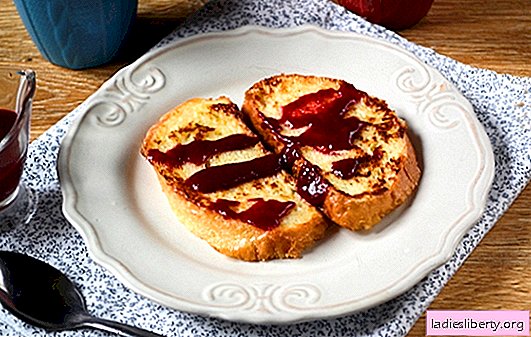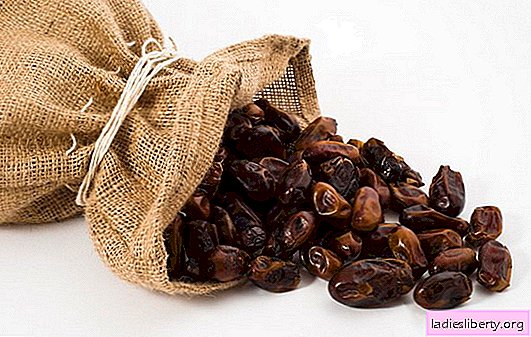
Barberry is of great interest to gardeners. Shrubs are used as hedges. Delicious home-made drinks are brewed from barberry fruits and used in folk medicine.
In addition, the bright leaves of the shrub stand out against the backdrop of greenery, which refreshes the landscape. How to plant a barberry and take care of it so that the bush will delight for many years?
Rules for planting barberry
The shrub easily takes root on almost any soil, it does not require special care, but there are some peculiarities in planting barberry.
1. Start planting shrubs in the spring, when the snow just melts. Barberry wakes up early, so you need to finish all the work before the kidneys swell.
2. Place open for shrubs. He is not afraid of winds and drafts, which is an undoubted advantage. Decorative varieties of barberry with bright leaves are best planted in sunny areas where they will be more comfortable. In partial shade, green varieties of barberry are grown.
3. The shrub is unpretentious to soils, but it does not tolerate too acidic soil.
Most often they grow barberries in a group planting. In this case, no more than two bushes are planted on one meter of beds.
Barberry is planted in a trench method, while the ditch is prepared a month before planting. The trench is made 40 cm wide and deep. The bottom of the landing pit is covered with a thick layer of sand, after which the trench is filled with humus and compost, with the addition of superphosphate and ash. Slaked lime is added to acidic soil.

The planting pit is well watered, after which a seedling is lowered into it and sprinkled with earth. The trunk circle is compacted and mulched with compost. After planting, the entire aerial part of the shrub is cut at the level of 3-5 buds.
Barberry care after planting
Caring for the shrub is so simple that even a beginner in gardening can handle it. Mandatory barberry care measures include watering, top dressing, weeding, and pruning.
How to water barberry
The shrub is excellent in rainwater, so often it is not necessary to water it. Barberry does not tolerate moisture at the roots, is sick and can die. In the rainy season, it is not watered at all, all weed grass in the root zone is removed, the soil is loosened.
During a drought, the barberry trunk circle is moistened once a week so that the earth does not dry out.
Particular attention is paid to newly planted plants. They are watered with a frequency of 1-2 times a week, until they completely take root.
How to fertilize barberry
In the first year after planting, the shrub does not fertilize, provided that the planting pit has been refueled according to all requirements. Next spring, nitrogen-based fertilizers are applied under each bush. You can water the bushes with a solution of urea, 25 gr. for 10 liters of water. This is where the care for decorative barberry ends.
Varieties of barberry, which are grown for healthy fruits, need additional nutrition immediately after flowering. During this period, the bush is watered with phosphorus-potassium fertilizers. You can use the mineral complex "Kemira-universal".
Correct pruning of barberry (photo)
Like all shrubs, barberry needs sanitary pruning, during which all weak and dry shoots are cut. Sanitary pruning is carried out in spring and early fall.
In the first year after planting, the bush is not pruned. Starting from the second year of cultivation, barberries are regularly trimmed. In addition to cleaning, pruning is aimed at forming a bush, so all shoots are shortened by 2/3.

Important! Low-growing varieties of barberry do not undergo radical pruning. Only sanitize if necessary.
Diseases and pests of barberry (photo)
Despite its unpretentiousness, barberry is unstable to diseases and pests. Most often, the plant is attacked by aphids. You can find it by fading young leaves. Preventive spraying with household soap is used against aphids.
A sawfly and flower moth can also settle on the shrubbery. These pests are most dangerous for varieties with edible fruits. They cause great damage to the crop, eating juicy berries. Chlorophos spraying will help get rid of pests.
With insufficient care or violation of the rules of cultivation, Barberry is affected by fungal diseases:
• powdery mildew;
• rust;
• bacterial cancer;
• leaf spotting.
Powdery mildew is manifested by a white coating on the shoots and leaves of the plant. The mushroom successfully hibernates on the bush, after which it again begins to actively multiply. To get rid of powdery mildew will help spraying with a solution of colloidal sulfur. If the moment is missed, then the affected parts of the bush are cut out and burned.

If red spots are visible on the leaves of the plant, on the back of which a cushion is visible, then rust can be judged. With severe damage, the leaves fade. For prophylaxis, shrubs are sprayed with Bordeaux liquid three times a season. The first treatment is carried out on a green cone. The interval between treatments is three weeks.

Various fungal spots on the leaves of barberry cause a lot of trouble. Preventive spraying with preparations containing copper will help get rid of the problem. Processing is carried out twice, before flowering and after.
Bacterial cancer on barberry is manifested by characteristic cracks, growths and outgrowth. This is a dangerous disease, but do not panic. If only the tops of the bush are affected, then cut off the sore spot, capturing some healthy tissue. Burn garbage. When the lower part of the bush is affected, then remove the diseased shoots completely. In some cases, it is required to uproot barberry and burn. To prevent the spread of the disease, the shrub is regularly sprayed with Bordeaux liquid or other preparations with copper.
Autumn Barberry Care
The adult barberry tolerates winter well, does not need shelter and additional care, which can not be said about the young plant.
Until the age of five, barberries must be covered for the winter, so that the plant does not suffer from frost. In late autumn, the shrub is mulched with a thick layer of humus, peat or dry leaves. After the weather has settled and the frosts are getting stronger, a wire frame is installed above the bush. The entire space inside the frame is filled with dry leaves, the covering material is pulled from the outside. In this state, barberry successfully tolerates all temperature changes. With the onset of spring, the frame is removed.

Methods of propagation of barberry
Barberry is well propagated by seeds, cuttings, layering and division of the bush. Each method has its advantages and features.
Shrub grown from seed, begins to bear fruit only 3 years after planting. Seeds need to be sown in the fall in the open ground, as they need stratification. Young barberry is planted in a permanent place only after two years.
Cuttings barberries are spent in the summer, while the cuttings are rooted in the greenhouse, where they are for the next two years. To improve root formation, prepared cuttings are sprinkled with a preparation for root growth.
Propagation by layering spend in the spring. The best branch is tilted to the ground and dug up. By the fall, the branch will take root, the young seedling will be ready for planting in a permanent place.
Propagation of barberry dividing the bush suitable for low grades. Uterine shrubs should not be older than 5 years. The bush is dug up and divided into several parts. This method allows you to quickly get a fruiting plant.











